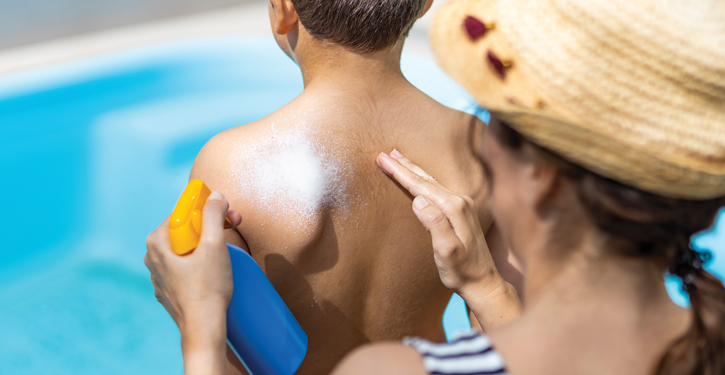Alec Hatlestad of Rocky Mountain Sunscreen shares a guide to sun safety for recreation professionals.
The sun’s rays can pose both benefits and risks, especially during outdoor recreational activities. To prioritize the health and well-being of participants, recreation professionals must possess adequate knowledge of sun safety practices, including the proper use of sunscreen.
Sunscreen Basics: Sunscreen is a topical product designed to protect the skin from the harmful effects of ultraviolet (UV) radiation. Understanding the distinction between UVA and UVB rays is essential. UVA is associated with skin aging while UVB is associated with skin burning. Sun Protection Factor (SPF) measures the level of protection against UVB rays and is key to consider when selecting sunscreen.
Factors to Consider: When choosing sunscreen, professionals should review factors such as participants’ skin type and sensitivity, the duration and intensity of the activity, and environmental conditions. Water-resistant sunscreens are essential for water-based activities, while higher SPF levels may be necessary for prolonged exposure or higher altitudes.
Proper Application: Educating participants on the correct application of sunscreen is crucial. Professionals should emphasize applying an adequate amount of sunscreen 20 minutes before leaving the house to all exposed areas of the body, including commonly missed areas like the ears, back of the neck and tops of the feet. Additionally, reapplication is necessary every two hours, or more frequently if swimming or sweating excessively.
Integration Into Recreational Activities: To ensure consistent sun protection, recreation professionals can incorporate sunscreen application into their program routines. They can encourage participants to take responsibility for their own sun protection by providing sunscreen stations and educating them about the importance of regular application.
Clothing and Accessories: Sunscreen should be complemented with additional sun protection strategies such as wearing protective clothing, wide-brimmed hats, sunglasses and sun-protective gear. Lightweight, tightly woven fabrics provide better protection, and sunglasses with UV protection shield the eyes from harmful rays.
Shade and Timing: Promoting the use of shade structures, umbrellas and planning activities during non-peak sun hours can significantly reduce participants’ sun exposure. Seeking shade when available and encouraging breaks indoors or in shaded areas can further minimize the risk of sunburn and heat-related illnesses.
Equipped with a guide to sun safety, recreation professionals can educate, implement proper application techniques and integrate sun protection strategies into their programs. By prioritizing sun safety, professionals create a safer outdoor recreational experience, reducing the risk of sunburns, skin damage and long-term health consequences associated with excessive sun exposure.










